Americans are eating more shrimp than ever, up to 5 pounds per capita per year, yet it’s not the shrimp most of them think they are eating
On a sunny and slick-calm North Carolina winter day, Captain John Silver navigates his 43-foot trawler, Silver Dollar, through Oregon Inlet into the Pamlico Sound, a trail of seagulls hovering close behind. With the boat’s hold full of 6,000 pounds of white shrimp, the highly sought-after, succulently sweet species the locals call “green tails,” he and his crew are headed to the fish house docks in Wanchese to sell their day’s haul.
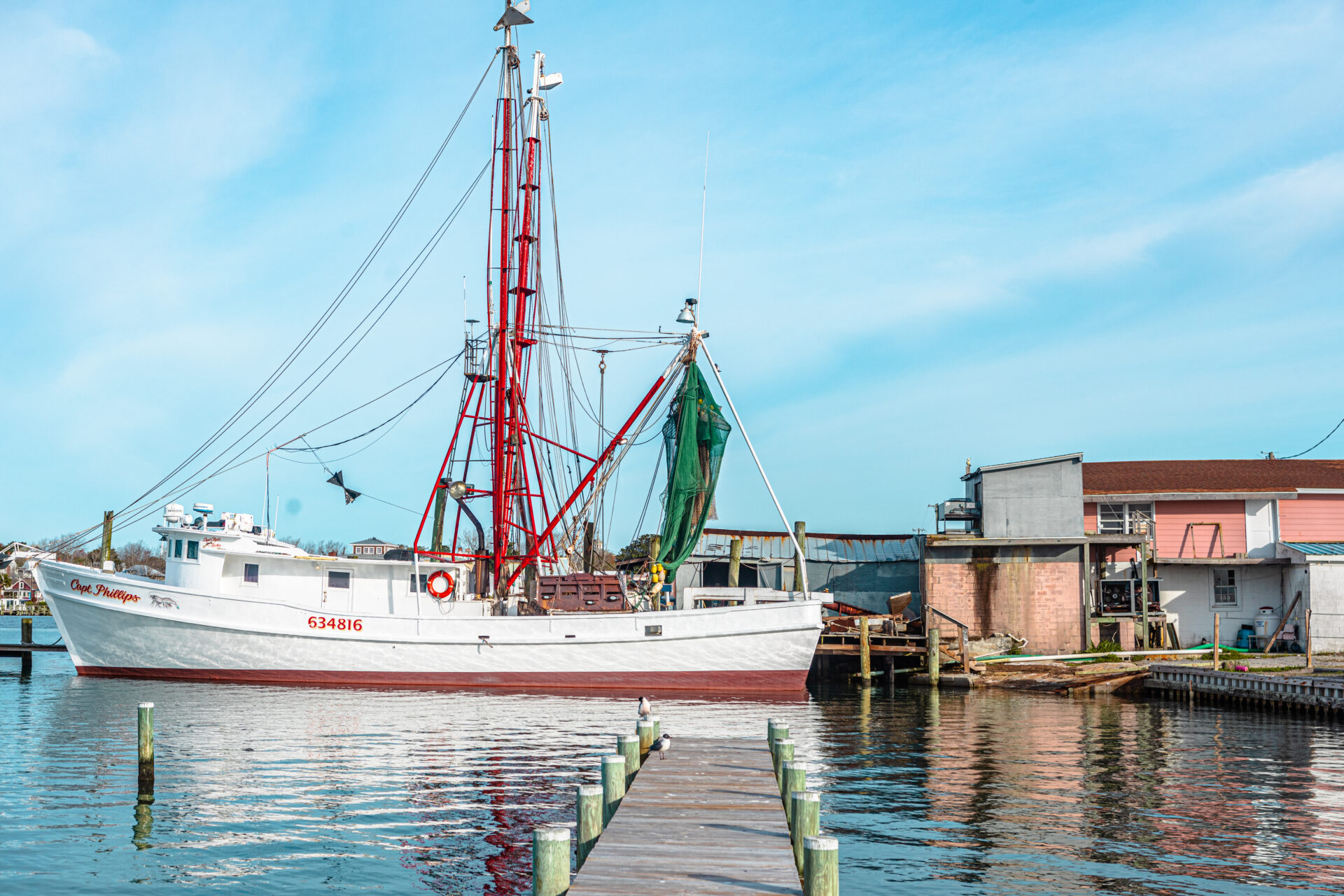
Depending on the season, Silver’s shrimping grounds around the Outer Banks of North Carolina range from the nearshore Atlantic Ocean to the Pamlico and Croatan sounds, part of Albemarle-Pamlico Estuary, the second-largest estuarine system in the United States. Nourished
by freshwater rivers and the salty ocean, these brackish waters are a productive breeding and feeding ground for marine life, including shrimp, the nation’s favorite seafood. The state’s three species of shrimp—brown, white, and pink—proliferate here and are caught in the sounds and near shore at various times of the year.
These waters are one of the top producers of shrimp in the nation, averaging 7.4 million pounds per year from 1994 to 2022. The wild-caught shrimp harvested here are one of the healthiest sources of protein on the planet and are sustainably harvested to strict governmental standards.
Yet when most North Carolinians sit down to a seafood dinner, even in restaurants overlooking these very waters, they are rarely eating shrimp that was harvested by Silver or his fellow commercial shrimpers. It’s a scenario that plays out in all the top shrimping states throughout the Southeast.
So, what’s the catch?
Imports.
Ninety percent of the shrimp that Americans eat is imported from shrimp farms in Vietnam, China, India, Thailand, and Central America.
The Problems With Imports
At the fish house in Wanchese, Silver is offered 69 cents a pound for his haul of wild-caught Atlantic Ocean shrimp, just barely enough to cover the cost of fuel, a decent wage for his crew, food for the night they spent on the ocean, and a little profit. “It’s OK, but for the amount of work that went into it to make that little, it’s not worth my while,” he says.
The next day he takes the shrimp trawling rig off his boat to prepare for a different fishery.
“I could keep shrimping longer this season; the shrimp are out there, but the way the market is going, we’re not getting much money for shrimp,” he says. Silver is a first-generation commercial fisherman who diversifies between shrimping, fishing, crabbing, and recreational charters throughout the year, depending on the season. “It’s a great season with wonderful shrimp, but the market has just been awful this year.”
The reason? “The market is flooded with imported shrimp. There would be a lot more demand for wild-caught if it wasn’t for imports.”
Silver can sell small amounts of his shrimp directly to coastal buyers who cherish fresh-caught shrimp, which fetches a higher price per pound. But moving huge amounts of highly perishable shrimp requires quick coordination and storage space—and this is what makes fish
houses such a valuable part of any fishery. They have the systems in place to buy large amounts of product from the fishermen, process it or get it to a processor, and find a buyer—a retailer or restaurant—to get the product to the final consumer.

Micah Daniels, who runs Fresh Catch Seafood in Wanchese with her husband, Matt Huth, confirms that there is a big problem with shrimp imports. They run their own fishing boats, buy seafood off other boats, and are a local market and a fish dealer. As dealers, they seek out markets and restaurants willing to pay a fair price for locally caught shrimp.
“When I sell wild-caught seafood on the domestic market, the first response is, ‘Well, this is what imports cost,’” Daniels says, adding that imported shrimp can be a couple of dollars to half the price less per pound. “The global economy makes it possible for cheap imported shrimp to be sold on domestic market. So the prices for wild-caught shrimp are driven down. But imports are so cheap, we can’t compete.”
And imported shrimp are getting cheaper. Deborah Long, a spokesperson for Southern Shrimp Alliance (SSA), an organization representing shrimpers, processors, and dealers in seven southeastern shrimping states, says the average per-pound value of shrimp imports decreased by 13.3 percent between 2022 and 2023, from $4.28 to $3.71 per pound. These falling prices drive down the value of US wild-caught shrimp even more. American shrimpers, processors, and fish houses get smaller and smaller portions of the market.
The SSA claims foreign countries are dumping their farm-raised shrimp on the US market—in other words, selling their excess shrimp at a lower price in the US than they could sell them in their own country or any other country.
“This is a huge challenge because wild-caught versus imported is not comparing apples and apples,” Daniels says. “The quality of imports is not nearly the same as wild-caught, but consumers who are price conscious will choose the cheaper product even though it’s not always
the healthier product.”
Daniels explains that customers, including restaurants, markets, and individual consumers, have been extremely price-conscious recently. “Wild-caught has been a hard sell this year,” she says. “People just did not want to pay for the quality wild-caught product.”
Most people don’t realize what they’re eating when they eat some imported shrimp, even though consumer watchdogs have been raising concerns about the safety of imported farm-raised shrimp for years.
“We keep records on imported farmed shrimp, and those statistics are frightening if you read how much illegal chemicals are in that product,” says John Williams, executive director of the SSA.
The SSA’s January 2024 newsletter detailed how reporting in the European Union (EU), Japan, and the United States continues to demonstrate that shrimp farmed and exported from India and Vietnam present antibiotic contamination. While the EU requires that half of the Indian
aquaculture shipments be tested for veterinary drugs, the SSA says the US Food and Drug Administration inspects less that 1 percent of imports.
“The US market has become a dumping ground for shrimp that are turned away from other major seafood importing countries,” Williams says.
Oceana, an organization dedicated to ocean conservation, says the top concerns about farm-raised shrimp include the use growth hormones, steroids, and antibiotics; the use of child labor or trafficked labor in some areas; and planet-degrading farming practices. Oceana says shrimp farms in Southeast Asia and Central America are decimating mangrove forests, one of the earth’s most productive ecosystems and important nurseries for fish.
Many sources also bring up the carbon footprint of shipping seafood imported around the planet.
Handling the Logistics
Meanwhile, American shrimpers are following strict sustainability guidelines, sustainable fishing practices, and safe handling requirements. They are required to use turtle excluder devices, fish excluder devices, and specific nets and to follow guidelines and rules about where and when to fish.
“Our country really does our fishermen a disservice,” Daniels says. “We’ve got local fishermen working under the strict practices that we hold acceptable, and yet they have to compete with imported seafood raised [with] no regulation.”
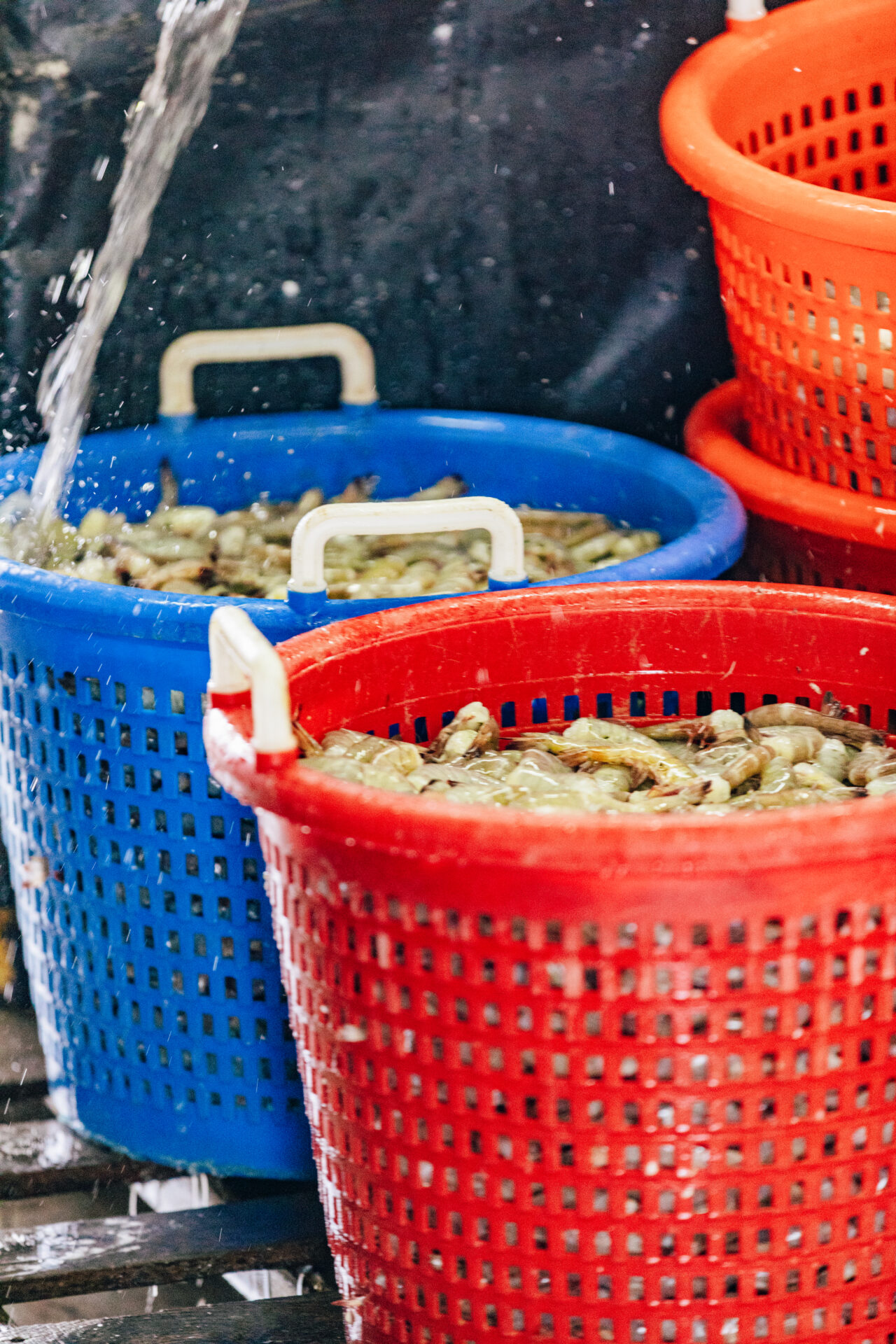
This is putting shrimpers out of business. North Carolina Division of Marine Fisheries (NCDMF) data reveals that in 2021, North Carolina shrimpers landed 10 million pounds of shrimp. In 2022, they landed 4.8 million pounds, a decrease of 52 percent. The number of shrimping trips decreased 38 percent from 2021 to 2022. NCDMF attributed that decline to poor ex-vessel prices (the price that shrimpers receive directly for their catch), cheap imported shrimp, and high fuel prices.
In his more than 15 years of working on the water, Silver confirms that he has seen the number of shrimp boats in the local waters rapidly dwindle.
“More people would be shrimping if the price we can get for them was not so low,” he says. “There used to be a lot more boats out here. But it’s just not as lucrative now.”
In North Carolina, there is also a logistical problem with seafood distribution. It’s much easier to find wild-caught seafood at the coast. But most of the wild-caught seafood that is harvested off the coast is whisked off to bigger cities like Baltimore, Philadelphia, and New York, where seafood can fetch a higher price. And wild shrimp, like all seafood, comes in feast or famine depending on seasonality and conditions.
As a result, finding wild-caught seafood in the western part of North Carolina is complicated. Currently, only one private company, Durham-based Locals Seafood, makes weekly runs between all corners of the coast to interior cities like Raleigh, Durham, Cary, and Asheville. They deliver to 100 restaurants, including their own, and around 25 grocery stores and farmers markets, including some locations of Whole Foods Market and their own market.
Luckily, shrimp freezes extremely well without sacrificing taste or texture, but keeping highly perishable shrimp fresh still requires speed. Locals Seafood makes trips to the coast with their own trucks six days a week, bringing seafood back to their own processing facility and getting it where it needs to be either fresh or frozen. They can get fresh shrimp to chefs within 24 hours of it being caught. “It’s extremely difficult,” says co-owner Ryan Speckman, which might explain why more businesses are not doing it.
Procuring wild-caught seafood requires a willingness to work with the fluctuating wild- caught seasons and a willingness to seek out the quality product and pay more for it. It is much easier (and cheaper) for most home cooks to grab a bag of frozen, imported farm-raised shrimp
in the freezer section of their grocery store.
And it is easier for many restaurants, even those at the coast, to use imported shrimp. Rather than seeking out, preparing, freezing, storing, and pricing wild-caught shrimp, they can buy imported shrimp that is available year round, consistently sized and priced, and already prepped through their food purveyor.
What About Taste?
“Imported just does not have the same flavor profile,” says Sara Mirabilio, fisheries extension specialist for NC Sea Grant. “Shrimp gain a certain flavor profile that comes from what they eat and where they are harvested. There’s a salty sweetness to wild-caught North Carolina shrimp. You just can’t get that from pond raised.”
Mirabilio participated in the National Fisheries Institute’s shrimp school, where she did a blind taste test of domestic and imported shrimp. “We did not know where what we were tasting came from,” she says, “but we tasted imported shrimp, frozen wild caught, fresh wild caught and more. And every time I picked the North Carolina shrimp. It just has a better texture and flavor profile.”
NC Sea Grant published results from a similar taste test and an accompanying survey demonstrating that North Carolinians’ preference is for fresh, wild-caught shrimp. Sixty percent of consumers surveyed significantly preferred the wild-caught shrimp over the farm-raised shrimp. Wild-caught shrimp scored significantly higher in tenderness and moistness (60 percent preferred).
Home cooks and chefs who know the superior flavor of wild-caught shrimp are often willing to pay a higher price for wild-caught shrimp. Wegman’s Grocery Store, for one, sells some wild-caught shrimp that they buy from Fresh Catch Seafood in Wanchese. Locals Seafood, as mentioned above, has chef clients, retailers, and customers in their own retail store who recognize wild-caught shrimp as a premium product that’s worth the extra money.
“Customers who know and appreciate wild-caught seafood are willing to pay for the healthier product, but this has been a crazy year for imports flooding the market,” Speckman says. “I buy at market price, and suddenly my shrimp is expensive. What keeps me going is the fact that seafood is special to people. It makes people happy, and most people prefer local seafood.”
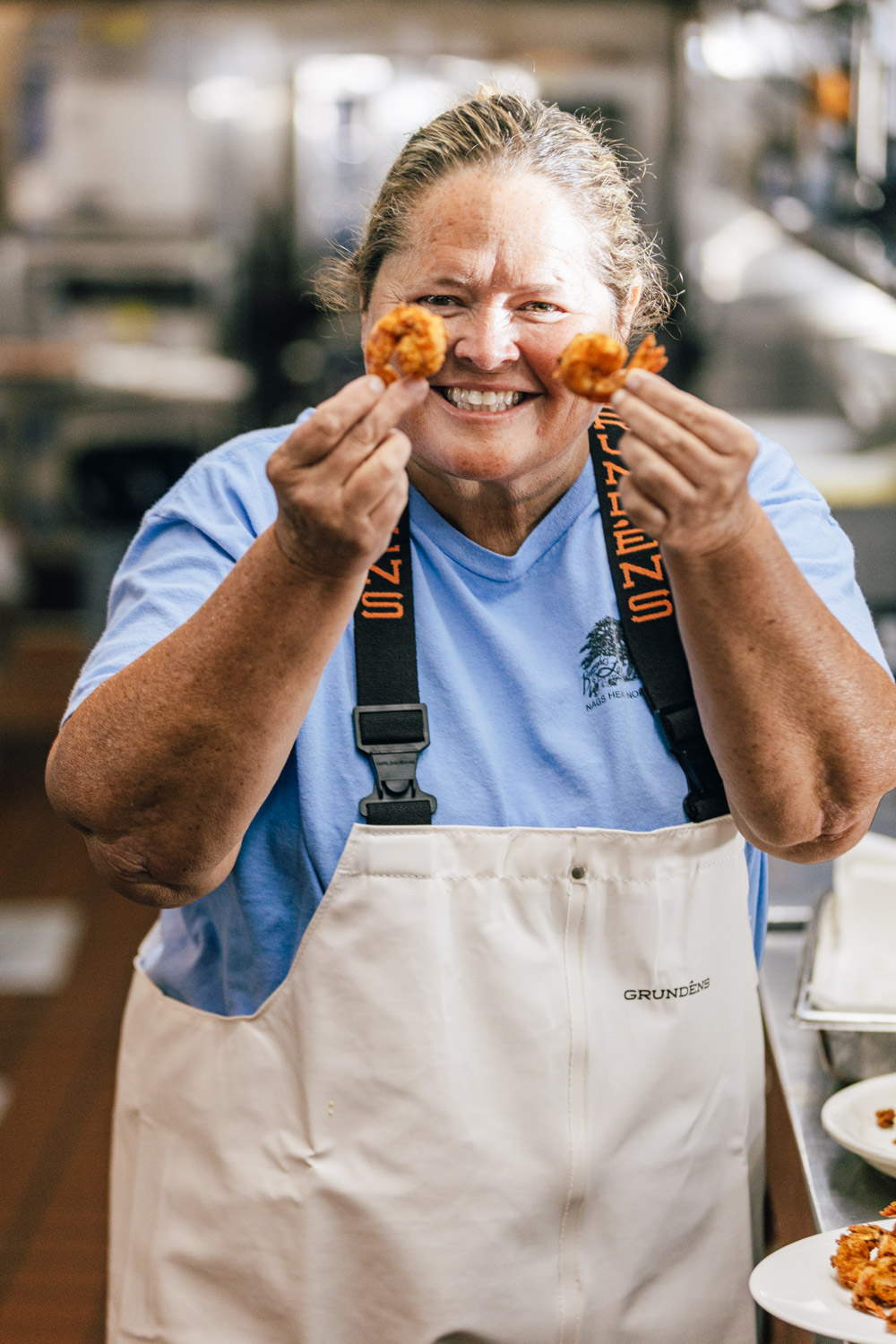
Vicki Basnight, co-owner of Basnight’s Lone Cedar Cafe in Nags Head, just across the water from Wanchese on the Outer Banks, is committed to selling all wild-caught seafood at her restaurant, even though it drives her food costs up, especially when it comes to shrimp, one of the most popular items on her menu.
“For us, it’s not only about our heritage; it’s about supporting our local fishermen and fish houses,” says Basnight, a lifelong resident of the Outer Banks who grew up shrimping with her grandfather. “And the quality is better. You can’t get any better than this.”
Plus, Basnight says, locals know the difference. “Even if it’s heavily breaded you can tell. Imported shrimp have an iridescent look, not the pink coloring of local shrimp.”
She says procuring fresh shrimp and seafood is a major part of her job. Then she has to pay people to peel and devein it. And because fresh shrimp is not available all the time, her restaurant had to invest in a blast freezer for freezing shrimp. “If we get 500 pounds, I can put away some for times when the shrimp are not being caught.”
After all this, she says she understands why some restaurants serve imported shrimp.
“It’s easier to serve and cheaper to get. And it’s uniform,” she says. “They are all the same size and look the same. The restaurant gets a good deal on it. It’s the same product at the same price and you can lock in that price. For a businessperson, that’s pretty smart.
“Meanwhile, the wild-caught price and availability fluctuates. I don’t know what I’m going to pay, yet I still have to set my menu price. I see both sides of this, but for us there is still no question of what we do and why we do it. The quality of wild-caught shrimp is better, bar none.”
What Is Being Done?
The fact remains that America’s shrimpers cannot feed everybody. Americans consumed almost 2 billion pounds of shrimp in 2020. US shrimpers landed 251 million pounds of wild-caught shrimp that year. While US shrimpers could catch more if not for imports, they could never meet the full demand, so taking imports completely off the market is not an option.
“Is all imported seafood bad? No,” Mirabilio says. “And let’s be real: We can’t meet our seafood demands with domestic wild-caught. I don’t fault someone for using it to meet their business needs. But I do believe there should be point of origin and traceability in labeling. I do think we should be truthful and let people make an informed decision.”
Many agree that educating consumers is the key. Groups like NC Sea Grant, NC Catch, and Got to Be NC conduct marketing campaigns to educate consumers about the quality and healthfulness of wild-caught seafood to encourage consumers to choose wild-caught more often.
The Southern Shrimp Alliance is working to ensure the viability of the shrimp industry. In late August 2023, the alliance sent letters to the governors of North Carolina, South Carolina, Georgia, Florida, Alabama, Mississippi, Louisiana, and Texas asking them to consider submitting a regionwide request for a fishery resource disaster determination. They also are addressing antibiotics, forced labor, and unfair trade laws.
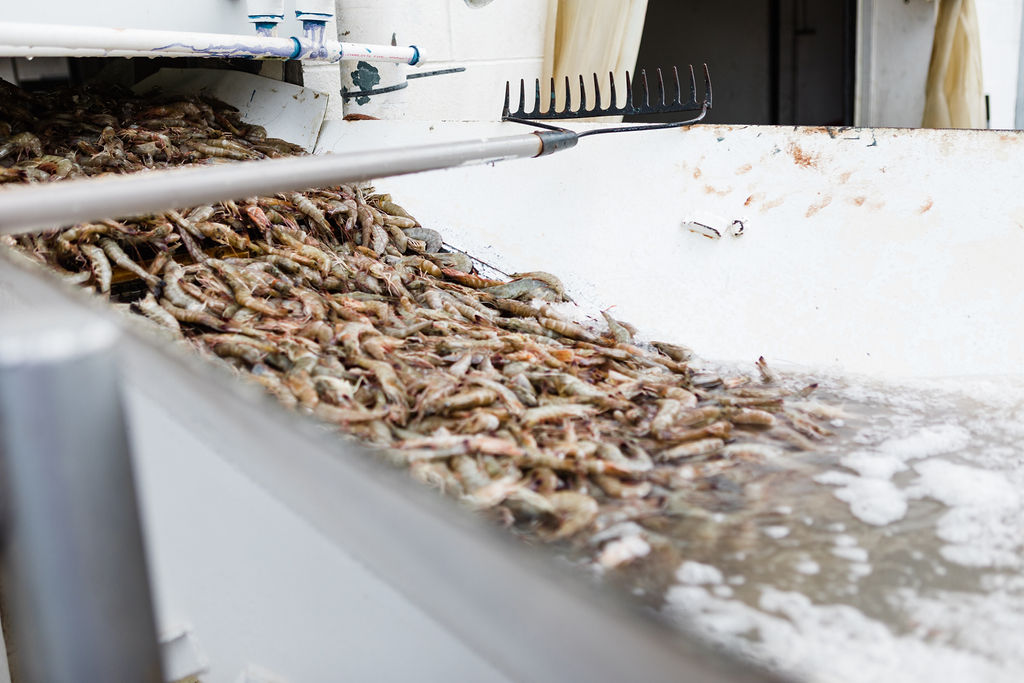
“We are doing all that can be done,” Williams says. “We are currently working with Congress to pass bills that would restrict some of the imported shrimp coming in from countries that are illegally using slave labor and trafficking in child labor to keep their prices down so that
it can sell in the US market, undercutting our price.”
Seafood Source reported in December 2023 that the US International Trade Commission voted in 2023 to maintain antidumping duties on shrimp from India, China, Thailand, and Vietnam and to continue investigating shrimp imports from Ecuador, India, Indonesia with regard to antidumping.
An Abundance of Wild-Caught
If logistics and a reduction of imports can be achieved, Mirabilio believes wild-caught shrimp are going to continue to be around. As far as the sustainability of wild-caught American shrimp, she says, “We have done a lot to meet the challenges of increasing harvest without comprising other fisheries and habit. Is it perfect fisheries management? No. But I’m telling you: The US has some of strictest regulation in the world. I feel much better about eating domestic seafood than foreign.”
In the end, if taste, texture, quality, cleanliness, sustainability, and ethical business practices matter to you, wild-caught American shrimp is worth seeking out. Think of it as a premium product that is worth the extra price. You get what you pay for, and what you pay for goes back into your community.
Keep Reading
In the Field
The Return of the Lynnhaven Oyster | Listen
A former fireboat captain returns to the water as an oyster farmer and tour […]
In the Field
Whole Hog Goes Global in Texas | Listen
Southern pitmasters Hector Garate and Don Nguyen are changing barbecue through their fusion of […]
In the Field
The Wandering Chef
Blair Machado and his Nomadic Supper Club pop up across the South bringing chefs, […]
share
trending content
-
One Night at Duck Camp
by TLP Editors -
The Local Palate’s Tour of Tucker | Video
by Maggie Ward -
The Swordfish Sea Change
by Emily Havener -
Summer’s Top Culinary Trends
-
Top 15 Restaurants Near the Atlanta Airport
by TLP's Partners

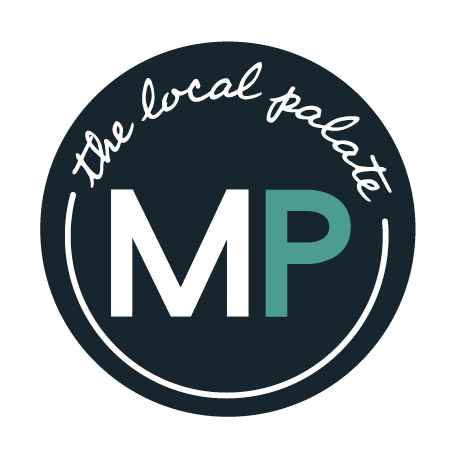





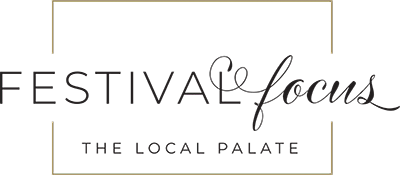



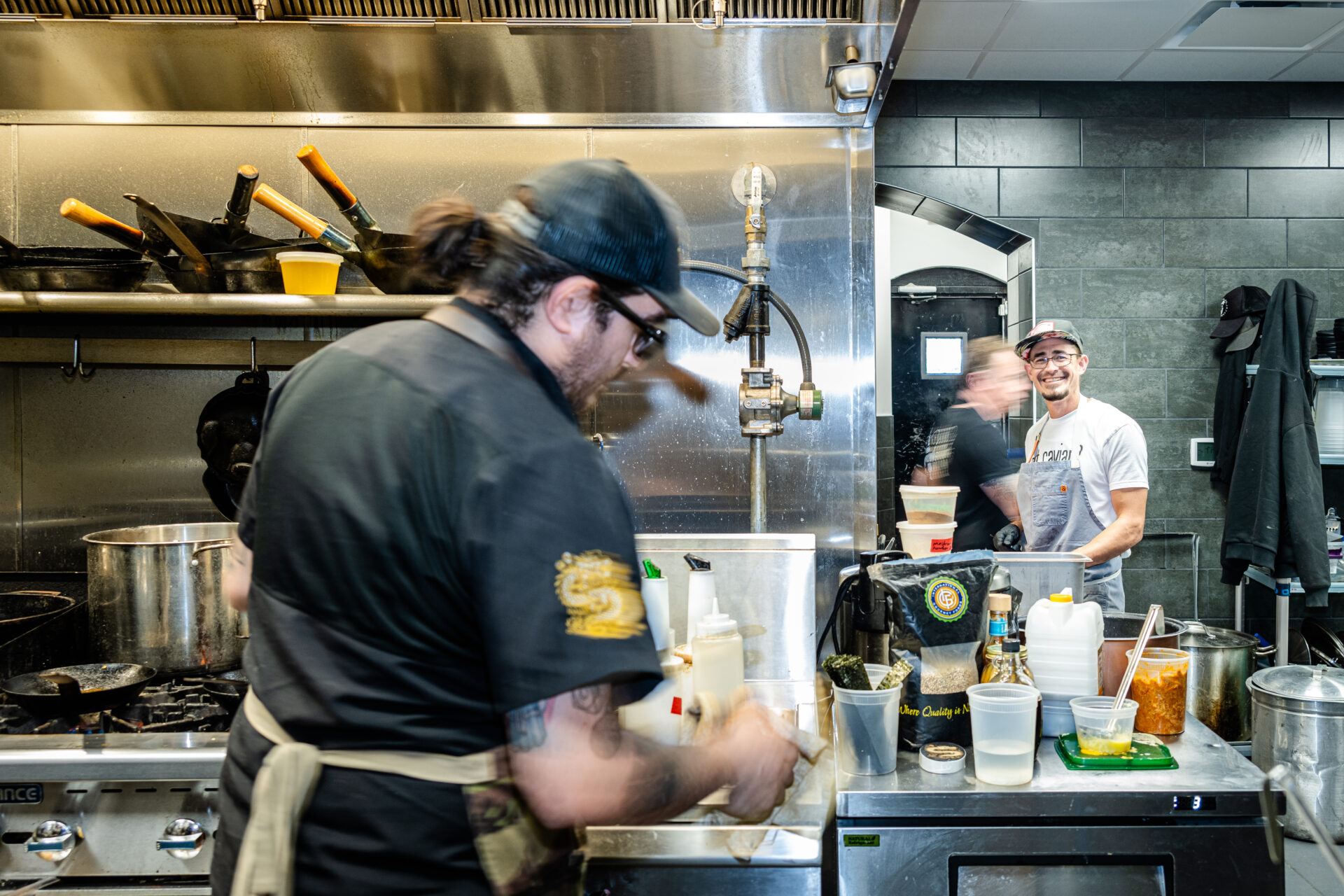
Comment 1
As a shrimp lover I would love to be able to get shrimp that comes from my homelands shores. I don’t trust the shrimpers in Asia to provide a clean and healthy product to us. They only care about the money they get, not about the health of people in the U.S..